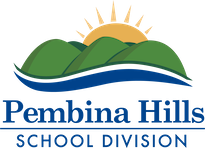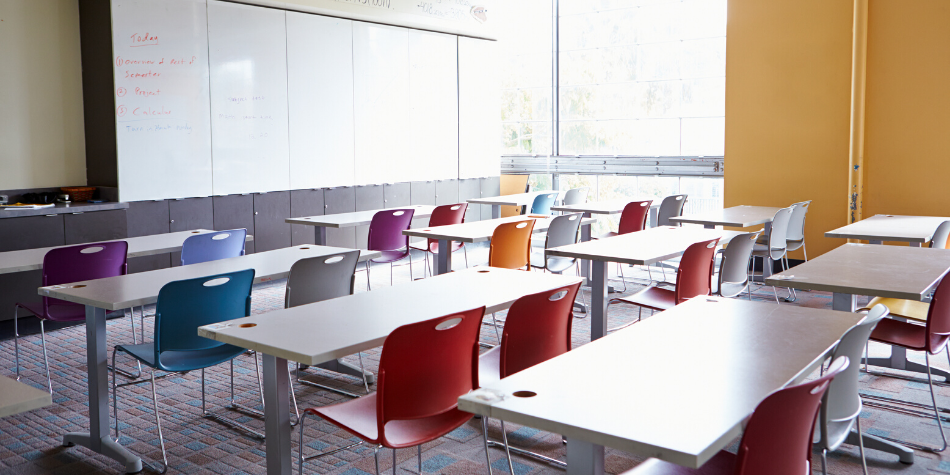Pembina Hills School Division will be announcing specifics regarding re-entry to our community schools after we analyze the guidelines and consult with school principals.
In the meantime, we can share with our families and staff the following Questions and Answers which have originated from the government of Alberta. (View the Questions and Answers in PDF format)
Re-entry plan scenarios
Why are you delaying a final decision on which scenario will be in place?
- We know the Alberta relaunch is going well and it’s likely students will return to in-school classes with near normal operations in September, but we are still many weeks away.
- It is better to wait and monitor the situation as things can change rapidly under this pandemic. We will share the decision before August 1.
- In the meantime, the re-entry plan provides clarity and direction so school boards can continue preparing for the three possible scenarios. We must keep in mind the need to be ready to transition between scenarios at any point in the upcoming school year.
Does this timeframe give enough time for schools to get ready for the fall?
- We’ve been consulting with school boards every step of the way, and they are aware of the timeline.
- They have already started preparing for the three possible scenarios and creating their own plans, so they are not waiting until August 1 to do so.
- Recognizing that the COVID-19 pandemic is complex and unpredictable, school boards have to be ready to transition from one scenario to another on a short notice even after school begins.
You describe scenario 1 as ‘near normal’ – what would be different from normal operations?
- Our new normal after COVID-19 is for all of us to stay vigilant while going back to normal daily activities like returning to school.
- The near normal is having regular daily classrooms but with health precautions.
- This would include an increase in good hygiene practices like more frequent hand washing and cleaning of surfaces, staying home when sick and when possible having some physical space between desks and students.
- In addition, students who develop symptoms at school may be asked to wear a mask and isolate in a separate room until a parent arrives for pickup. If a separate room is not available, the student must be kept at least two metres away from other individuals.
What’s the difference between scenarios 1 and 2?
- In scenario 1, students will go to school daily but with health measures in place including frequent hand washing and cleaning of surfaces, staying home when sick, and leaving some physical space when possible between students.
- Scenario 2 will have the same considerations as scenario 1, with the following differences:
- A recommended maximum of 15 people in a classroom to allow for more consistent physical distancing.
- Students will attend school less regularly as school authorities will need to adjust their class schedule and configuration to meet the physical distancing requirement.
Is there a potential that different parts of the province are in different scenarios, depending on the local pandemic situation?
- That is a possibility.
- We will take guidance from the Chief Medical Officer of Health on that front.
- If a local area has active cases over 50 per 100,000 population, additional health recommendations will be in place which may impact school operations.
How do the scenarios match with the provincial relaunch stages?
- In stage 2 of the provincial relaunch, our government is allowing for in-person classes to begin for summer school while following health measures.
- The chief medical officer of health continues to monitor the situation and will provide direction on which scenario will be in place for the next school year.
- Thankfully, all communities in our province are now designated as ‘open’ with low infection rates.
- If a local area has active cases over 50 per 100,000 population, that will put them in the ‘watch’ designation. In that situation, additional health recommendations will be in place, which may impact school operations.
The plan seems light on specific direction – why are there not more explicit details on the health guidelines?
- Alberta Health has provided three detailed guidance documents: one for summer school, one for scenario 1, and another for scenario 2 for the upcoming school year.
- Zone medical officers of health are available to support school boards and offer advice and direction on needed health measures.
Why are you leaving some decisions to the local school board? Wouldn’t it make sense to be consistent across the province?
- We are striking a balance between the need for a standardized province-wide approach in some areas while respecting local autonomy.
- We are providing guidance on key operation issues and decisions on matters the province is responsible for like provincial exams and teacher certification.
- School boards should develop their own COVID-19 plans under the applicable scenario and health guidelines prior to reopening.
Are you going to provide more funding to the system to deal with extra costs related to COVID?
- The new funding model provides flexibility for school boards to allocate funding where needed.
Are you considering extending the cuts into the fall if at-home learning continues? What if school boards had to switch to at-home learning if a second wave hits later in the school year?
- Funding is being reinstated on July 1 and it will continue to flow to school boards.
- The reduction in funding was a temporary measure during an unprecedented time due to the suspension of in-school classes and to allow additional dollars to be directed to the province’s overall COVID-19 response.
What mental health supports will be in place for students and staff?
- Alberta Education’s new Specialized Learning Support Grant provides funding for school authorities to support student wellness. That includes psychological and social-emotional support, and access to mental health workers and behavioral consults.
- School authorities should reach out to health partners to ensure supports are in place for students during this difficult time.
- Mental health resources are also available online at www.alberta.ca/covid, which includes a section on mental health and family violence. This includes important phone numbers that Albertans can call for additional support.
What recommendations were adopted based on consultations with parents and education partners? What feedback did you get?
- Education is complex and this is a complex plan.
- We balanced a broad range of perspectives in arriving at this plan.
- What we heard from school boards during is they wanted direction on matters that the provincial government needs to make decisions but they also wanted the flexibility to determine the school calendar and decide on what’s best on a local level. So we strived to find that balance.
School safety
How would a classroom operate under physical distancing – if only a small number of students can fit safety into a classroom?
- In scenario 1, some physical spacing is recommended in situations where it is possible. In classrooms, buses, and activities where it’s difficult to do so, emphasis is put on the other effective hygiene practices.
- In scenario 2, the health requirements change to a 2 metre physical distance and a maximum of 15 people in a room. In that situation, school boards may divide students into more groups to go back to in-school classes on an alternating schedule – so not all students are in classrooms at the same time.
- The re-entry plan and the Alberta Health guidelines list what school boards need to consider when they develop their plan that works for them.
How will busing be handled?
- School authorities will have to consider additional safety measures to minimize the risk of exposure to the driver and students.
- These would include additional cleaning after every route and a protective zone for the driver such as physical distancing, a mask or a physical barrier.
What are schools looking at for extra cleaning?
- The Alberta Health guidelines list the considerations for cleaning so school boards can develop their plans.
- That includes daily cleaning of high contact surfaces like water fountains, washrooms and shared spaces and equipment several times a day.
- And regular deep cleaning when students are not present.
What happens if a student or staff member gets COVID-19 – will the entire school shut down?
- If COVID-19 cases are identified within a school, the zone medical officer of health will work directly with the school authority to provide recommendations for staff, parents and students that may include easily accessible testing.
- Alberta Health Services may request the school to close in-person classes to allow the public health investigation to take place.
- Each school board will support students and staff to learn or work at home if they are required to self-isolate.
Will students wear masks?
- Students and staff who do not show symptoms will not be required to wear a mask.
- It is generally not recommended for young children to wear a mask.
- However, if families choose to have their children wear masks, care should be taken that the children are not stigmatized.
What if staff, student or their family members have underlying health conditions? Should they avoid school next fall?
- They should consult with their family physician and discuss the available options for support with their local school board.
How would you provide assurance to parents who are concerned about safety? Will parents have school tours? If parents find the hygiene standards are not followed what can they do?
- The safety of students is our top priority. School boards are developing their own plans to follow safety guidelines that Alberta Health has provided.
- Parents can coordinate with their schools and school boards to discuss ideas and any concerns.
What role do teachers and staff and parents play in determining the health status of a student when in-school classes resume?
- We are all in this together. Parents play an integral role in the screening of students for any symptoms before they head to school.
- If a student shows symptoms of COVID-19 related illness at school, each school board will develop their protocols based on the guidelines provided by Alberta Health.
Can the school nutrition program continue next school year?
- Yes, while following the health recommendations.
- That includes no self-serve or family-style meal service. Instead, schools would switch to pre-packaged meals or meals served by designated staff.
Learning
The government talked about coming back early in August to make up for lost time – is that still a consideration?
- The school boards decide on their school calendar.
- They have the autonomy and flexibility to make these decisions including the length of the school day.
How will schools deal with students who may have missed significant class time or if they fell behind during learning at home?
- School authorities can increase the instruction time of core subjects like English, math and science by reducing time spent on non-core subjects.
Will option courses be available in the older grades?
- Students would need to contact their local school board and ask about the available options.
What if a parent doesn’t feel comfortable sending their child back to school – will the school need to accommodate at-home learning in this case?
- Parents would need to contact their local school boards to discuss the available options.
- We have been working closely with the Alberta School Councils’ Association. The majority of more than 66,000 parents who took their survey were in favour for a return to in-school classes.
Will diploma exams proceed?
- August diploma exams will proceed for students taking diploma courses this summer. Summer programming will follow scenario 2.
- For next school year, diploma exams will be held if the first or second scenarios are in place. In scenario 3, exams may be cancelled.

